Fostering Resilience and Adaptation to Drought in the Southern High Plains: Using Participatory Methods for More Robust Citizen Science
Abstract
:1. Introduction
Complementary and Parallel Approaches of Participatory Action Research (PAR)
2. Background and Methods
Situating PAR within “No Man’s Land”
3. Results and Discussion
3.1. Ten Entry Points for Participatory Methods in Citizen Science
3.1.1. Develop Questions and Deliverables with Communities
3.1.2. Assist Existing Community-Based Projects
3.1.3. Find Niches for Project Participation, Technology Transfer and Education
3.1.4. Organize Student Field Projects
3.1.5. Create Safe Spaces for the Discussion of “Hot Topics”
3.1.6. Use Participatory Mapping and Traditional Environmental Knowledge (TEK) Techniques for the Coproduction of Scientific Knowledge
3.1.7. Create Tools for the Community, by the Community, with the Community
3.1.8. Share First, Decide Together What Is Shared and What Is Not
3.1.9. Do Not Be a Beverly Hills Geographer/Researcher—Just Say “Yes!”
3.1.10. Reflect on the Process, Adapt as Needed
4. Conclusions
Author Contributions
Funding
Institutional Review Board Statement
Informed Consent Statement
Data Availability Statement
Acknowledgments
Conflicts of Interest
References
- Irwin, A. Citizen Science: A Study of People, Expertise, and Sustainable Development; Routledge: London, UK, 1995. [Google Scholar]
- Irwin, A.; Wynne, B. Misunderstanding Science?: The Public Reconstruction of Science and Technology; Cambridge University Press: Cambridge, UK, 2004. [Google Scholar]
- Bonney, R.; Cooper, C.B.; Dickinson, J.; Kelling, S.; Phillips, T.; Rosenberg, K.V.; Shirk, J. Citizen science: A developing tool for expanding science knowledge and scientific literacy. BioScience 2009, 59, 977–984. [Google Scholar] [CrossRef]
- Cooper, C.B.; Dickinson, J.; Phillips, T.; Bonney, R. Citizen science as a tool for conservation in residential ecosystems. Ecol. Soc. 2007, 12, 11. Available online: http://www.ecologyandsociety.org/vol12/iss2/art11/ (accessed on 30 June 2021).
- Shirk, J.L.; Ballard, H.L.; Wilderman, C.C.; Phillips, T.; Wiggins, A.; Jordan, R.; McCallie, E.; Minarchek, M.; Lewenstein, B.V.; Krasny, M.E.; et al. Public participation in scientific research: A framework for deliberate design. Ecol. Soc. 2012, 17, 29. [Google Scholar] [CrossRef] [Green Version]
- Adamou, A.; Georgiou, Y.; Paraskeva-Hadjichambi, D.; Hadjichambis, A.C. Environmental citizen science initiatives as a springboard towards the education for environmental citizenship: A systematic literature review of empirical research. Sustainability 2021, 13, 13692. [Google Scholar] [CrossRef]
- Turreira-García, N.; Lund, J.F.; Domínguez, P.; Carrillo-Anglés, E.; Brummer, M.C.; Duenn, P.; Reyes-García, V. What’s in a name? Unpacking “participatory” environmental monitoring. Ecol. Soc. 2018, 23, 24. [Google Scholar] [CrossRef]
- Theobald, E.J.; Ettinger, A.K.; Burgess, H.K.; DeBey, L.B.; Schmidt, N.R.; Froehlich, H.E.; Wagner, C.; HilleRisLambers, J.; Tewksbury, J.; Harsch, M.A.; et al. Global change and local solutions: Tapping the unrealized potential of citizen science for biodiversity research. Biol. Conserv. 2015, 181, 236–244. [Google Scholar] [CrossRef] [Green Version]
- Skarzauskiene, A.; Mačiulienė, M. Citizen science addressing challenges of sustainability. Sustainability 2021, 13, 13980. [Google Scholar] [CrossRef]
- Future Earth 2012. Available online: https://futureearth.org/ (accessed on 30 June 2021).
- The United Nations Educational, Scientific and Cultural Organization (UNESCO). UNESCO Science Commission Adopts Open Science Recommendation. 2021. Available online: https://council.science/current/news/unesco-science-commission-adopts-open-science-recommendation/ (accessed on 29 December 2021).
- Hecker, S.; Haklay, M.; Bowser, A.; Makuch, Z.; Vogel, J.; Bonn, A. Innovation in Open Science, Society, and Policy-Setting the Agenda for Citizen Science. In Citizen Science: Innovation in Open Science, Society, and Policy; Hecker, S., Haklay, M., Bowser, A., Makuch, Z., Vogel, J., Bonn, A., Eds.; UCL Press: London, UK, 2018; pp. 1–23. [Google Scholar]
- Schade, S.; Pelacho, M.; Noordwijk, T.; Vohland, K.; Hecker, S.; Manzoni, M. Citizen Science and Policy; Springer: New York, NY, USA, 2021. [Google Scholar] [CrossRef]
- Sui, D.; Goodchild, M.; Elwood, S.A. Volunteered geographic information, the exaflood, and the growing digital divide. In Crowdsourcing Geographic Knowledge; Sui, D., Elwood, S.A., Goodchild, M., Eds.; Springer: Dordrecht, The Netherlands, 2013; pp. 1–12. [Google Scholar]
- Purdam, K. Citizen social science and citizen data? Methodological and ethical challenges for social research. Curr. Sociol. 2014, 62, 374–392. [Google Scholar] [CrossRef]
- Mah, A. Environmental justice in the age of big data: Challenging toxic blind spots of voice, speed, and expertise. Environ. Sociol. 2017, 3, 122–133. [Google Scholar] [CrossRef] [Green Version]
- Colston, N.; Vadjunec, J.M.; Wakeford, T. Exploring the entry points for citizen science in urban sustainability initiatives. Curr. Opin. Environ. Sustain. 2015, 17, 66–71. [Google Scholar] [CrossRef] [Green Version]
- Wiggins, A.; Crowston, K. From conservation to crowdsourcing: A typology of citizen science. In Proceedings of the 44th Hawaii International Conference on System Sciences, Kauai, HI, USA, 4–7 January 2011; pp. 1–10. [Google Scholar] [CrossRef] [Green Version]
- Crall, A.W.; Newman, G.J.; Stohlgren, T.J.; Holfelder, K.A.; Graham, J.; Waller, D.M. Assessing citizen science data quality: An invasive species case study. Conserv. Lett. 2011, 4, 433–442. [Google Scholar] [CrossRef]
- Colston, N.; Vadjunec, J.M.; Fagin, T.D. What is the role of academic-community partnership capacity in adaptive drought communication? Lessons from open public meetings. In Proceedings of the Citizen Science Association Conference, Twin Cities, MI, USA, 17–20 May 2017. [Google Scholar]
- Soleri, D.; Long, J.W.; Ramirez-Andreotta, M.D.; Eitemiller, R.; Pandya, R. Finding pathways to more equitable and meaningful public-scientist parternships. Citiz. Sci. Theory Pract. 2016, 1, 1–11. [Google Scholar] [CrossRef] [Green Version]
- Wainwright, J. Geopiracy: Oaxaca, Militant Empiricism, and Geographical Thought; Palgrave Macmillan: New York, NY, USA, 2012. [Google Scholar]
- Haklay, M. Citizen science and volunteered geographic information: Overview and typology of participation. In Crowdsourcing Geographic Knowledge; Springer: Dordrecht, The Netherlands, 2013; pp. 105–122. [Google Scholar]
- Dickinson, J.L.; Bonney, R. Citizen Science: Public Collaboration in Environmental Research; Cornell University Press: Ithaca, NY, USA, 2012. [Google Scholar]
- Wisner, B.; Stea, D.; Kruks, S. Participatory and action research methods. In Advances in Environment, Behavior, and Design; Zube, E.H., Moore, G.T., Eds.; Springer: New York, NY, USA, 1991; pp. 271–295. [Google Scholar]
- De Andrade, E.N.F.; da Cunha, N.V. Action research with John Dewey’s poetic and rhetoric pedagogy. Int. J. Action Res. 2017, 13, 261–275. [Google Scholar] [CrossRef]
- Lewin, K. Action research and minority problems. J. Soc. Issues 1944, 2, 34–46. [Google Scholar] [CrossRef]
- MacDonald, C.D. Understanding participatory action research: A qualitative research methodology option. Can. J. Action Res. 2012, 13, 34–50. [Google Scholar]
- Freire, P. Pedagogy of the Oppressed; Herder and Herder: New York, NY, USA, 1970. [Google Scholar]
- Maguire, Patricia. Doing Participatory Research: A Feminist Approach. Center for International Education, Amherst, MA. Available online: https://scholarworks.umass.edu/cie_participatoryresearchpractice/6 (accessed on 29 December 2021).
- Hildebrand, P.E.; Ruano, S. El Sondeo: Una Metodología Multidisciplinaria de Caracterización de Sistemas de Cultivo Desarrollada por el ICTA; Folleto Técnico—Instituto de Ciencia y Tecnología Agrícolas—ICTA: Villa Nueva, Guatemala, 1982. [Google Scholar]
- Posey, D.A.; Dutfield, G.; Plenderleith, K. Collaborative research and intellectual property rights. Biodivers. Conserv. 1995, 4, 892–902. [Google Scholar] [CrossRef]
- Harding, S. The Postcolonial Science and Technology Studies Reader; Duke University Press: Durham, UK, 2011. [Google Scholar]
- Athayde, S.; Silva-Lugo, J.; Schmink, M.; Kaiabi, A.; Heckenberger, A. Reconnecting art and science for sustainability: Learning from indigenous knowledge through participatory action-research in the Amazon. Ecol. Soc. 2017, 22, 36. [Google Scholar] [CrossRef] [Green Version]
- Pimbert, M.; Wakeford, T. Prajateerpu, power and knowledge: The politics of participatory action research in development part 1. Context Proc. Safeguards Action Res. 2003, 1, 184–207. [Google Scholar] [CrossRef]
- Anderson, B.; Böhmelt, T.; Ward, H. Public opinion and environmental policy output: A cross-national analysis of energy policies in Europe. Environ. Res. 2017, 12, 114011. [Google Scholar] [CrossRef]
- Rocheleau, D. Maps, numbers, text, and context: Mixing methods in feminist political ecology. Prof. Geogr. 1995, 47, 458–466. [Google Scholar] [CrossRef]
- Poteete, A.R.; Janssen, N.; Ostrom, E. Working Together: Collective Action, the Commons, and Multiple Methods in Practice; Princeton University Press: Princeton, NJ, USA, 2010. [Google Scholar] [CrossRef]
- Blaikie, P.; Cannon, T.; Davies, I.; Wisnerm, B. At Risk: Natural Hazards, People′s Vulnerability and Disaster; Routledge: London, UK, 2004. [Google Scholar]
- McCall, M.; Peters-Guarin, G. Participatory action research and disaster risk. In The Routledge Handbook of Hazards and Disaster Risk Reduction; Wisner, B., Kelman, I., Gaillard, J.C., Eds.; Routledge: London, UK, 2012; pp. 727–741. [Google Scholar]
- Flicker, S.; O’Campo, P.; Monchalin, R.; Thistle, J.; Worthington, C.; Masching, R.; Guta, A.; Pooyak, S.; Whitebird, W.; Thomas, C. Research done in “A Good Way”: The importance of indigenous elder involvement in HIV community-based research. Am. J. Public Health 2015, 105, 1149–1155. [Google Scholar] [CrossRef]
- Smith, L.; Bratini, L.; Chambers, D.-A.; Jensen, R.V.; Romero, L. Between idealism and reality: Meeting the challenges of participatory action research. Act. Res. 2010, 8, 407–425. [Google Scholar] [CrossRef]
- Grant, J.; Nelson, G.; Mitchell, T. Negotiating the challenges of participatory action research: Relationships, power, participation, change, and credibility. In The SAGE Handbook of Action Research, 2nd ed.; Reason, P., Bradbury, H., Eds.; SAGE Publications Ltd.: London, UK, 2008; pp. 588–601. [Google Scholar]
- Harrison, J.L. Parsing “Participation” in Action Research: Navigating the challenges of lay involvement in technically complex participatory science projects. Soc. Nat. Resour. 2011, 24, 702–716. [Google Scholar] [CrossRef]
- Paris, D.; Winn, M.T. Humanizing Research: Decolonizing Qualitative Inquiry with Youth and Communities; Sage Publication Ltd.: London, UK, 2014. [Google Scholar]
- Vadjunec, J.M.; Frazier, A.E.; Kedron, P.; Fagin, T.D.; Zhao, Y. A land systems science framework for bridging land system architecture and landscape ecology: A case study from the southern high plains. Land 2018, 7, 27. [Google Scholar] [CrossRef] [Green Version]
- Colston, N.M.; Vadjunec, J.M.; Fagin, T.D. It is always dry here: Examining perceptions about drought and climate change in the southern high plains. Environ. Commun. 2019, 13, 958–974. [Google Scholar] [CrossRef]
- Wegner, K.; Vadjunec, J.M.; Fagin, T.D. Groundwater governance and the growth of center pivot irrigation in Cimarron County, OK and Union County, NM: Implications for community vulnerability to drought. Water 2017, 9, 39. [Google Scholar] [CrossRef] [Green Version]
- Vadjunec, J.M.; Boardman, A.; Fagin, T.D.; Larson, M.P.; Kedron, P.; Birchler, B. Footprints from the dust bowl: Using historical geographic information systems to explore land and resource access, use, and survivability in “No Man’s Land,” Cimarron County, Oklahoma. Ann. Am. Assoc. Geogr. 2021, 111, 1906–1930. [Google Scholar] [CrossRef]
- Vadjunec, J.M.; Sheehan, R. Ranching and state school land in cimarron county, Oklahoma. Great Plains Res. 2010, 20, 163–177. [Google Scholar]
- Fagin, T.D.; Vadjunec, J.M.; Colston, N.M.; Wegner, K.; Graham, A. Land tenure and landscape change: A comparison of public-private lands in the southern great plains. Ecol. Proc. 2016, 5, 12. [Google Scholar] [CrossRef] [Green Version]
- Boardman, A. The Next Generation of Land System Science: Integrating Meso-Scale Analysis and UAS Remote Sensing in Changing Plant Communities of the United States′ Southern Great Plains. Master’s Thesis, Oklahoma State University, Stillwater, OK, USA, 2020. [Google Scholar]
- Duncan, D.; Burns, K. The Dust Bowl: An Illustrated History; Chronicle Books LLC: San Francisco, CA, USA, 2012. [Google Scholar]
- Egan, T. The Worst Hard Times; Houghton Mifflin Company: Boston, MA, USA, 2006. [Google Scholar]
- U.S. Drought Monitor. U.S. Drought Monitor, 2021. Available online: http://droughtmonitor.unl.edu/ (accessed on 28 September 2018).
- Alvis, B.N. A history of Union County. N. M. Hist. Rev. 1947, 22, 256. [Google Scholar]
- Young, N.G. Cimarron County. The Encyclopedia of Oklahoma History and Culture. 2018. Available online: www.okhistory.org (accessed on 26 September 2018).
- Lowitt, R. American Outback; Texas Tech University Press: Lubbock, TX, USA, 2006. [Google Scholar]
- United States Census Bureau. QuickFacts. 2021. Available online: https://www.census.gov/quickfacts/fact/table/US/PST045217 (accessed on 28 March 2021).
- The Nature Conservancy (TNC). Oklahoma Black Mesa Nature Preserve. 2018. Available online: https://www.nature.org/en-us/get-involved/how-to-help/places-we-protect/black-mesa-preserve/ (accessed on 28 September 2018).
- United States Department of Agriculture (USDA). 2017 Census of Agriculture, 2017. Available online: https://www.nass.usda.gov/Publications/AgCensus/2017/index.php (accessed on 28 March 2021).
- Turner, B.; Meyer, W.B.; Skole, D.L. Global land-use/land-cover change: Towards an integrated study. Ambio 1994, 23, 91–95. [Google Scholar]
- Pfeiffer, L.; Lin, C.-Y.C. Does efficient irrigation technology lead to reduced groundwater extraction?: Empirical evidence. J. Environ. Econ. Manag. 2014, 67, 189–208. [Google Scholar] [CrossRef] [Green Version]
- Environmental Working Group (EWG). Farm Subsidies Database, 2020. Available online: https://www.ewg.org/ (accessed on 30 June 2021).
- Mauser, W.; Klepper, G.; Rice, M.; Schmalzbauer, B.S.; Hackmann, H.; Leemans, R.; Moore, H. Transdisciplinary global change research: The co-creation of knowledge for sustainability. Curr. Opin. Environ. Sustain. 2013, 5, 420–431. [Google Scholar] [CrossRef] [Green Version]
- Van Kerkhoff, L.E.; Lebel, L. Coproductive capacities: Rethinking science-governance relations in a diverse world. Ecol. Soc. 2015, 20, 14. [Google Scholar] [CrossRef] [Green Version]
- Godemann, J.; Michelsen, G. Sustainability communication—An introduction. In Sustainability Communication; Springer: Dordrecht, The Netherlands, 2011; pp. 3–11. [Google Scholar]
- Heinrichs, H. Participation: Empowerment for sustainable development. In Sustainability Communication; Springer: Dordrecht, The Netherlands, 2011; pp. 187–198. [Google Scholar]
- Von Korff, Y.; d’Aquino, P.; Daniell, K.A.; Bijlsma, R. Designing participation processes for water management and beyond. Ecol. Soc. 2010, 15. Available online: http://www.ecologyandsociety.org/vol15/iss3/art1/ (accessed on 28 March 2021). [CrossRef] [Green Version]
- Stevens, M.; Vitos, M.; Altenbuchner, J.; Conquest, G.; Lewis, J.; Haklay, M. Taking participatory citizen science to extremes. IEEE Pervasive Comput. 2014, 13, 20–29. [Google Scholar]
- Minkler, M. Ethical challenges for the “outside” researcher in community-based participatory research. Health Educ. Behav. 2004, 31, 684–697. [Google Scholar] [CrossRef]
- Pandya, R.E. A framework for engaging diverse communities in citizen science in the US. Front. Ecol. Environ. 2012, 10, 314–317. [Google Scholar] [CrossRef]
- Israel, B.A.; Schulz, A.J.; Parker, E.A.; Becker, A.B. Review of community-based research: Assessing partnership approaches to improve public health. Ann. Rev. Public Health 1998, 19, 173–202. [Google Scholar] [CrossRef] [Green Version]
- Huntington, H.P. Using traditional ecological knowledge in science: Methods and applications. Ecol. Appl. 2000, 110, 1270–1274. [Google Scholar] [CrossRef]
- Prokopy, L.S.; Carlton, J.S.; Haigh, T.; Lemos, M.C.; Mase, A.S.; Widhalm, M. Useful to Usable: Developing usable climate science for agriculture. Climat. Risk Manag. 2017, 15, 1–7. [Google Scholar] [CrossRef] [Green Version]
- Bacon, C.; deVuono-Powell, S.; Frampton, M.L.; LoPresti, T.; Pannu, C. Introduction to empowered partnerships: Community-based participatory action research for environmental justice. Environ. Justice 2013, 6, 1–8. [Google Scholar] [CrossRef]
- Ostrom, E.; Cox, M. Moving beyond panaceas: A multi-tiered diagnostic approach for social-ecological analysis. Environ. Conserv. 2010, 37, 451–463. [Google Scholar] [CrossRef] [Green Version]
- Zeigler, K.E.; Podzemny, B.; Yuhas, A.; Blumenberg, V. Groundwater resources of Union County. N. M. A Prog. Rep. N. M. Geol. Soc. Guideb. 2019, 70, 127–137. [Google Scholar]
- Beierle, T.C. Public Participation in Environmental Decisions: An Evaluation Framework Using Social Goals. Resources for the Future 1998. Available online: http://ageconsearch.umn.edu/bitstream/10497/1/dp990006.pdf (accessed on 30 June 2021).
- Pahl-Wostl, C.; Tàbara, D.; Bouwen, R.; Craps, M.; Dewulf, A.; Mostert, E.; Taillieu, T. The importance of social learning and culture for sustainable water management. Ecol. Econ. 2008, 64, 484–495. [Google Scholar] [CrossRef]
- Berkes, F.; Colding, J.; Folke, C. Rediscovery of traditional ecological knowledge as adaptive management. Ecol. Appl. 2000, 10, 1251–1262. [Google Scholar] [CrossRef]
- Benyei, P.; Aceituno-Mata, L.; Calvet-Mir, L.; Tardío, J.; Pardo-de-Santayana, M.; García-del-Amo, D.; Rivera-Ferre, M.; Molina-Simón, M.; Gras-Mas, A.; Perdomo-Molina, A.; et al. Seeds of change: Reversing the erosion of traditional agroecological knowledge through a citizen science school program in Catalonia, Spain. Ecol. Soc. 2020, 25, 19. [Google Scholar] [CrossRef]
- Vogel, C.; Moser, S.C.; Kasperson, R.E.; Dabelko, G.D. Linking vulnerability, adaptation, and resilience science to practice: Pathways, players, and partnerships. Glob. Environ. Chang. 2007, 17, 349–364. [Google Scholar] [CrossRef]
- Stepenuck, K.F.; Green, L. Individual- and community-level impacts of volunteer environmental monitoring: A synthesis of peer-reviewed literature. Ecol. Soc. 2015, 20, 19. [Google Scholar] [CrossRef]
- Moellenkamp, S.; Lamers, M.; Huesmann, C.; Rotter, S.; Pahl-Wostl, C.; Speil, K.; Pohl, W. Informal participatory platforms for adaptive management. Insights into niche-finding, collaborative design and outcomes from a participatory process in the rhine basin. Ecol. Soc. 2010, 14, 41. [Google Scholar] [CrossRef] [Green Version]
- Pain, R. Commentary: Working across distant spaces: Connecting participatory action research and teaching. J. Geogr. High. Educ. 2009, 33, 81–87. [Google Scholar] [CrossRef] [Green Version]
- Elwood, S.A. Integrating participatory action research and GIS education: Negotiating methodologies, politics and technologies. J. Geogr. High. Educ. 2009, 33, 51–65. [Google Scholar] [CrossRef]
- Robbins, P. Research is theft: Environmental inquiry in a postcolonial world. In Approaches to Human Geography; Aitken, S., Valentine, G., Eds.; SAGE Publications Ltd.: London, UK, 2006; pp. 311–324. [Google Scholar]
- Vadjunec, J.M. A place for serendipitous mistakes? Selling mixed methods fieldwork to students in a digital age. Geogr. Rev. 2019, 110, 23–37. [Google Scholar] [CrossRef]
- Rocheleau, D. Political ecology in the key of policy: From chains of explanation to webs of relation. Geoforum 2008, 39, 716–727. [Google Scholar] [CrossRef]
- Stoutenborough, J.W.; Vedlitz, A. Public attitudes toward water management and drought in the United States. Water Resour. Manag. 2014, 28, 697–714. [Google Scholar] [CrossRef]
- Plummer, R.; Crona, B.; Armitage, D.R.; Olsson, P.; Tengö, M.; Yudina, O. Adaptive comanagement: A Systematic review and analysis. Ecol. Soc. 2012, 17, 11. [Google Scholar] [CrossRef]
- Liverman, D.; Moran, E.F.; Rindfuss, R.R.; Stern, P.C. People and Pixels: Linking Remote Sensing and Social Science; National Academy Press: Washington, DC, USA, 1998. [Google Scholar]
- Vadjunec, J.M.; Rocheleau, D. Beyond forest cover: Land use and biodiversity in rubber trail forests of the Chico Mendes Extractive Reserve. Ecol. Soc. 2009, 14, 29. Available online: http://www.ecologyandsociety.org/vol14/iss2/art29/ (accessed on 30 June 2021). [CrossRef] [Green Version]
- Gaillard, J.-C.; Maceda, E.A. Participatory three-dimensional mapping for disaster risk reduction. Particip. Learn. Act. 2009, 60, 109–118. [Google Scholar]
- Lakshminarayanan, S. Using citizens to do science versus citizens as scientists. Ecol. Soc. 2007, 12, r2. Available online: http://www.ecologyandsociety.org/vol12/iss2/resp2/ (accessed on 30 June 2021). [CrossRef]
- Birchler, B.; Vadjunec, J.M.; Boardman, A.; Fagin, T.D.; Kedron, P. Mapping vulnerability to hazards and the effects of technology on building socio-ecological resilience in America′s Southern High Plains. In Proceedings of the American Association of Geographers, Boston, MA, USA, 5–9 April 2017. [Google Scholar]
- Boll-Bosse, A.J.; Hankins, K.B. “These Maps Talk For Us:” participatory action mapping as civic engagement practice. Prof. Geogr. 2018, 70, 319–326. [Google Scholar] [CrossRef]
- Smith, W.J., Jr. Geographic research in water resources: A vibrant research agenda for the next 20 years. J. Contemp. Water Res. Educ. 2009, 142, 83–88. [Google Scholar] [CrossRef]
- Breen, J.; Dosemagen, S.; Warren, J.; Lippincott, M. Mapping grassroots: Geodata and the structure of community-led open environmental science. ACME Int. J. Crit. Geogr. 2015, 14, 849–873. [Google Scholar]
- Nietschmann, B.Q. The Nietschmann syllabus: A vision of the field. Geogr. Rev. 2001, 91, 175–184. [Google Scholar] [CrossRef]
- Lobe, B.; Vehovar, V. Towards a flexible online mixed method design with a feedback loop. Qual. Quant. 2009, 43, 585–597. [Google Scholar] [CrossRef]
- Mustaro, P.N.; Rossi, R. Project management principles applied in academic research projects. Issues Inform. Sci. Inf. Technol. 2013, 10, 325–340. [Google Scholar] [CrossRef]
- Simonsen, J.; Hertzum, M. Iterative participatory design. In Design Research: Synergies from Interdisciplinary Perspectives; Simonsen, J., Bærenholdt, J.O., Büscher, M., Scheuer, J.D., Eds.; Routledge: London, UK, 2010; pp. 16–32. [Google Scholar]
- Bhuiyan, N.; Baghel, A. An overview of continuous improvement: From the past to the present. Manag. Decis. 2005, 43, 761–771. [Google Scholar] [CrossRef] [Green Version]
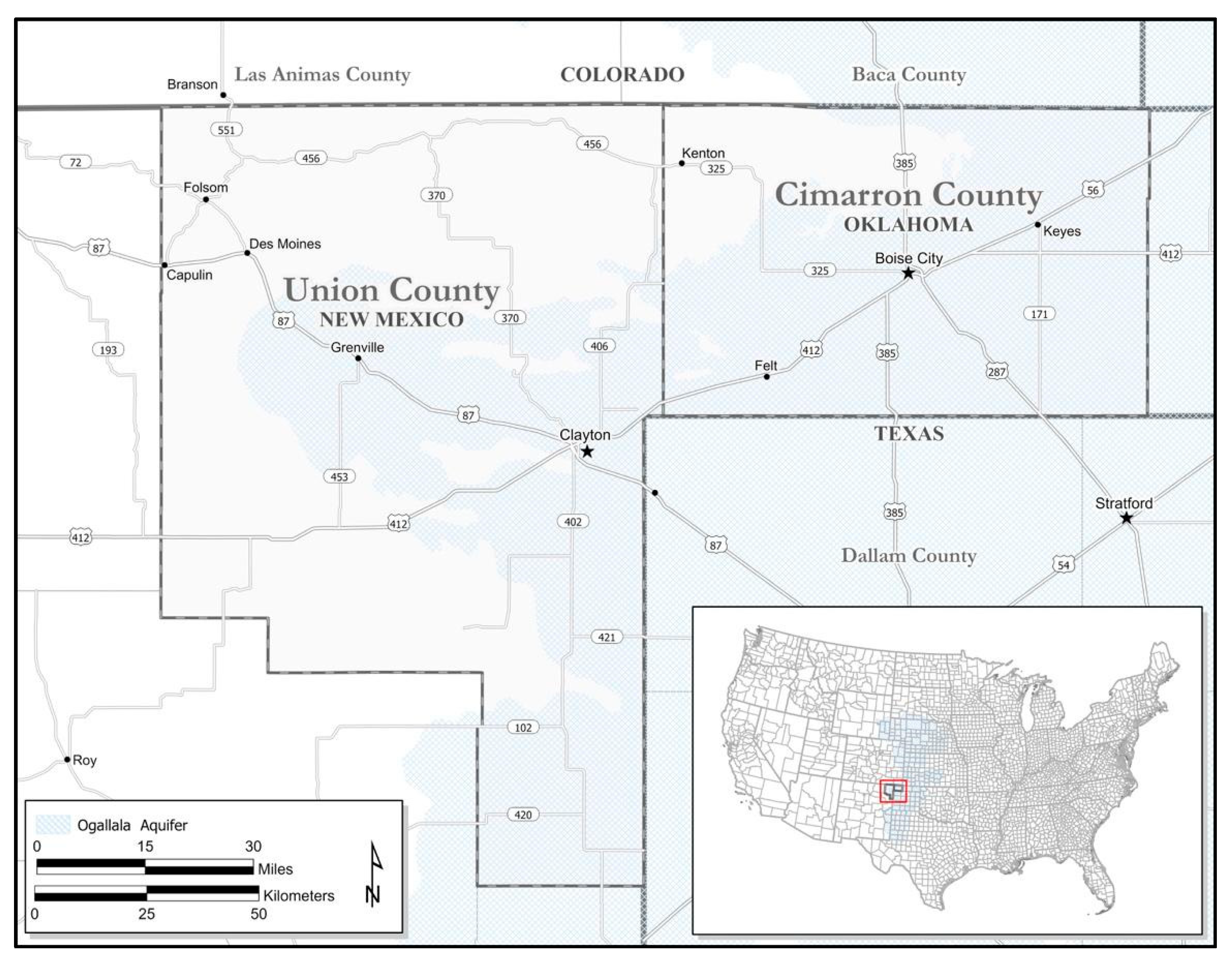
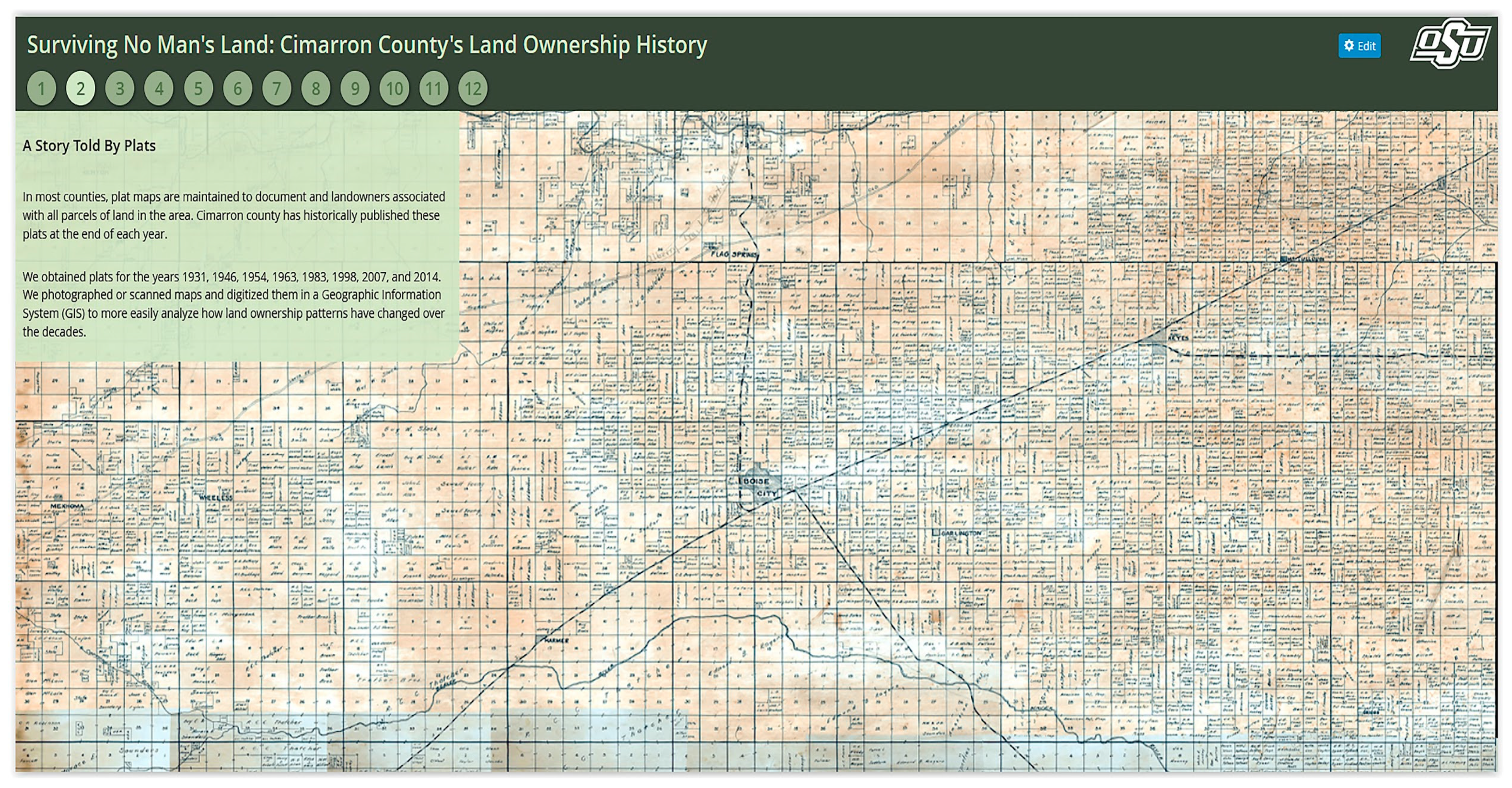

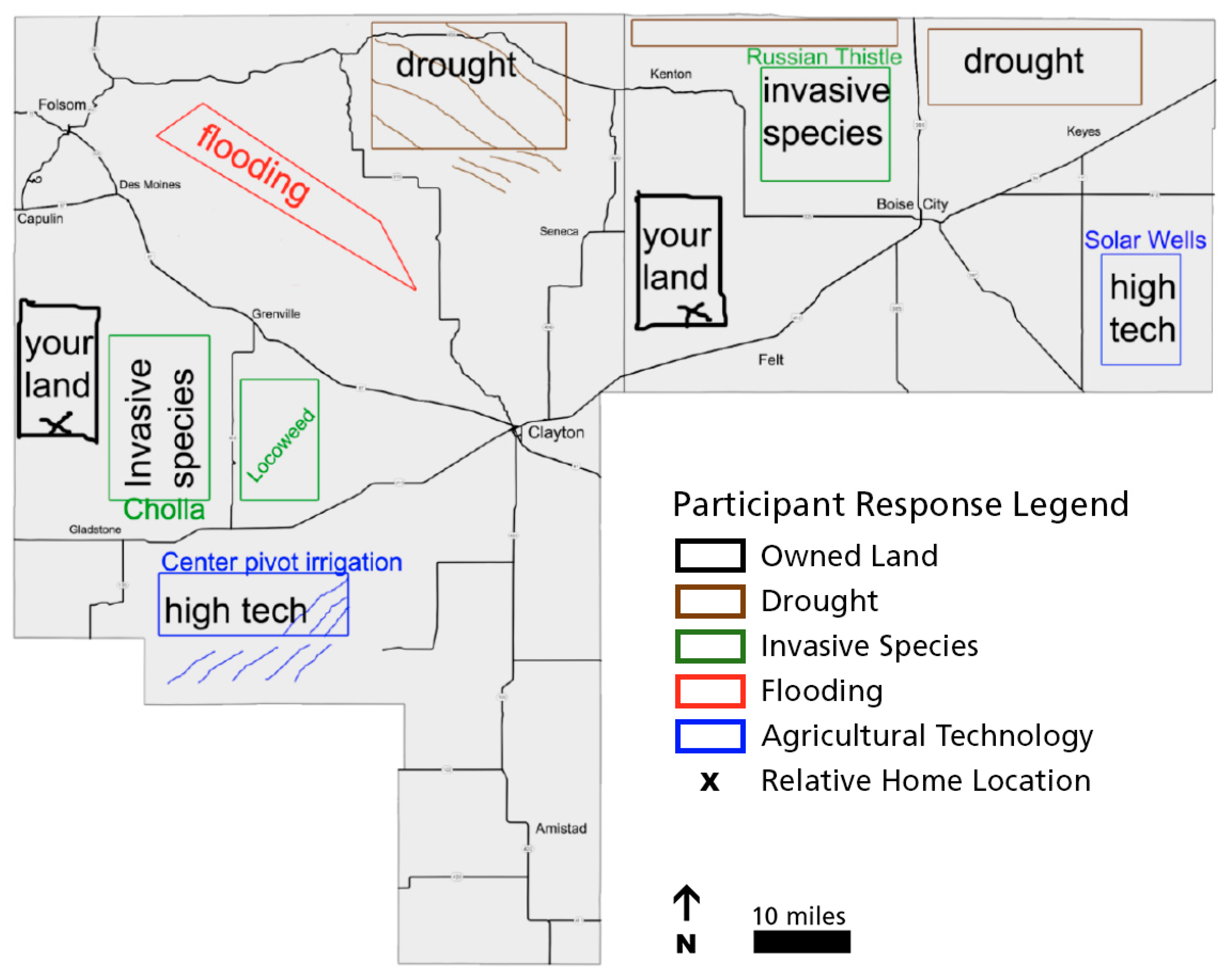
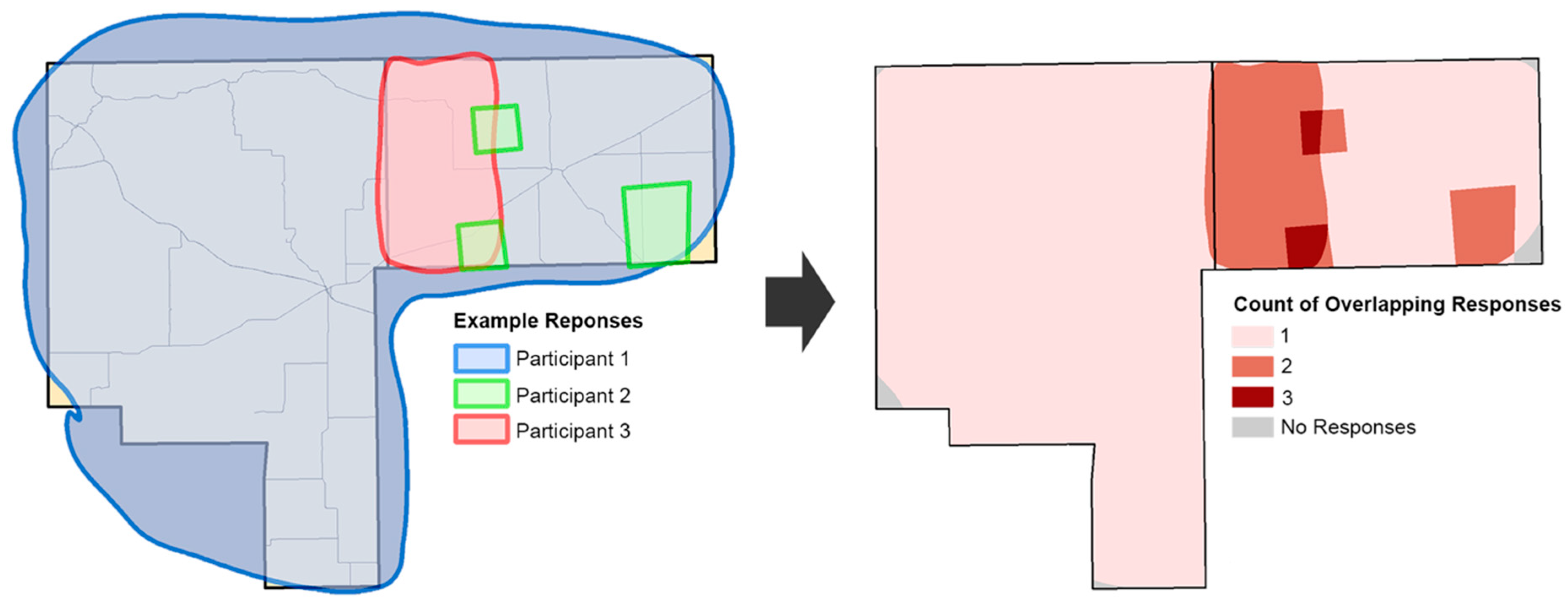
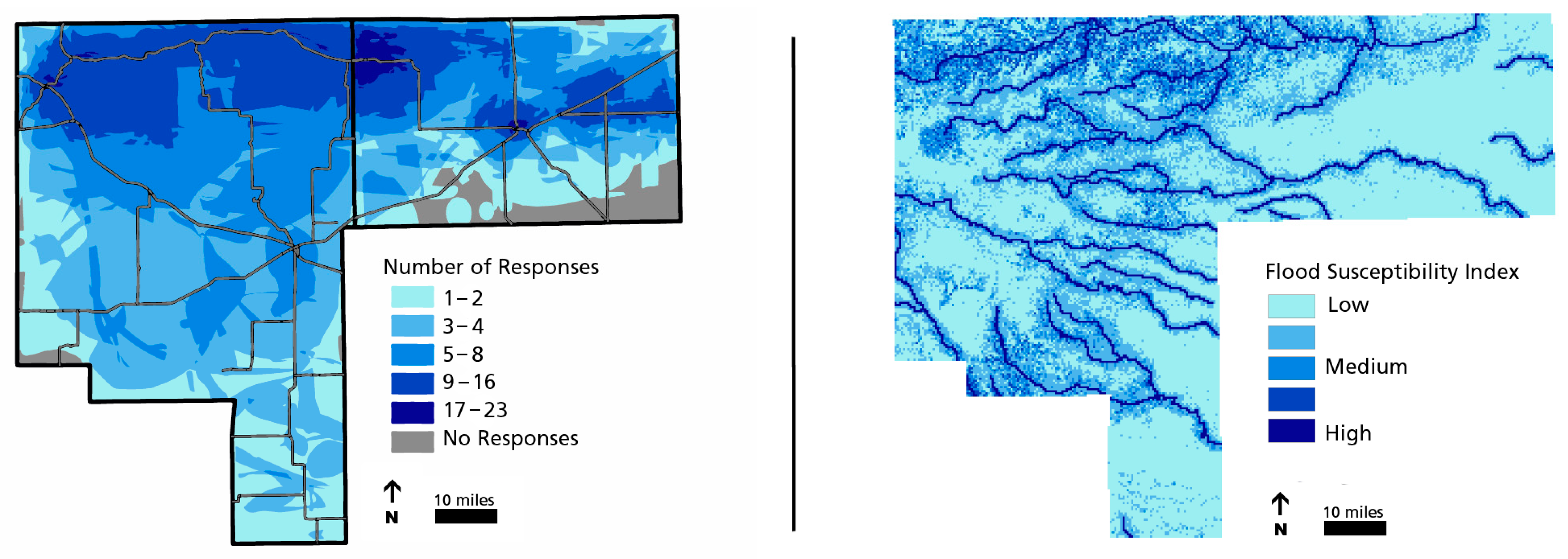
Publisher’s Note: MDPI stays neutral with regard to jurisdictional claims in published maps and institutional affiliations. |
© 2022 by the authors. Licensee MDPI, Basel, Switzerland. This article is an open access article distributed under the terms and conditions of the Creative Commons Attribution (CC BY) license (https://creativecommons.org/licenses/by/4.0/).
Share and Cite
Vadjunec, J.M.; Colston, N.M.; Fagin, T.D.; Boardman, A.L.; Birchler, B. Fostering Resilience and Adaptation to Drought in the Southern High Plains: Using Participatory Methods for More Robust Citizen Science. Sustainability 2022, 14, 1813. https://doi.org/10.3390/su14031813
Vadjunec JM, Colston NM, Fagin TD, Boardman AL, Birchler B. Fostering Resilience and Adaptation to Drought in the Southern High Plains: Using Participatory Methods for More Robust Citizen Science. Sustainability. 2022; 14(3):1813. https://doi.org/10.3390/su14031813
Chicago/Turabian StyleVadjunec, Jacqueline M., Nicole M. Colston, Todd D. Fagin, Austin L. Boardman, and Brian Birchler. 2022. "Fostering Resilience and Adaptation to Drought in the Southern High Plains: Using Participatory Methods for More Robust Citizen Science" Sustainability 14, no. 3: 1813. https://doi.org/10.3390/su14031813
APA StyleVadjunec, J. M., Colston, N. M., Fagin, T. D., Boardman, A. L., & Birchler, B. (2022). Fostering Resilience and Adaptation to Drought in the Southern High Plains: Using Participatory Methods for More Robust Citizen Science. Sustainability, 14(3), 1813. https://doi.org/10.3390/su14031813







